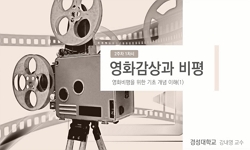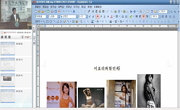This article aims to explore the achievements and footprints of Korean semiotics by analyzing the trends in the Journal of 『Semiotic Studies』 over the past 30 years. The subject of the trend analysis is 768 papers published in the Journal of 『Se...
http://chineseinput.net/에서 pinyin(병음)방식으로 중국어를 변환할 수 있습니다.
변환된 중국어를 복사하여 사용하시면 됩니다.
- 中文 을 입력하시려면 zhongwen을 입력하시고 space를누르시면됩니다.
- 北京 을 입력하시려면 beijing을 입력하시고 space를 누르시면 됩니다.

기호학 연구의 경향성 분석 - 1995년∼2023년 한국기호학회 학술지 『기호학연구』를 중심으로 = Analysis of Trends in Semiotic Studies: Focusing on the 『Semiotic Studies』 Journal of the Korean Association for Semiotic Studies, from 1995 to 2023
한글로보기https://www.riss.kr/link?id=A109240887
- 저자
- 발행기관
- 학술지명
- 권호사항
-
발행연도
2024
-
작성언어
-
-
주제어
기호학연구 ; 기호학 ; 메타분석 ; 연구 경향성 ; 기호학자 ; 한국기호학회 ; Semiotic Studies ; Semiotics ; Meta-analysis ; Studies Trend ; Semiologist ; Korean Association for Semiotic Studies
-
KDC
700
-
등재정보
KCI등재
-
자료형태
학술저널
-
수록면
31-67(37쪽)
- 제공처
-
0
상세조회 -
0
다운로드
부가정보
다국어 초록 (Multilingual Abstract)
As a result, the number of papers in the Journal of 『Semiotic Studies』 has shown an increasing trend every year since its first publication in 1995 but has been declining since peaking between 2010 and 2014. The research direction was mainly focused on theory (386 papers) and analysis (382 papers), with only 21 practical papers, which is very minimal. The scholars frequently mentioned in the Journal of 『Semiotic Studies』 include Peirce, Saussure, Levi-Strauss, Barthes, Greimas, Eco, and Lotman. In particular, Saussure and Peirce were frequently mentioned, indicating that they are an important epistemological foundation in semiotic research. The main research subjects of the Journal of Semiotic Studies were thoughts, literature, visual media, new media, language, and images.
Cross-analysis results show that theoretical papers were more than twice as numerous as analytical papers during the first ten years after the initial publication, but since 2015, analytical papers have been more frequently published than theoretical papers. The trend in research subjects by year was initially focused on literature in the early days of the Journal of 『Semiotic Studies』 but has expanded to films, broadcasting, games, advertisements, and new media since 2000. Next, the trend in research subjects by research direction shows that analytical papers mainly dealt with literature, visual media, new media, and images, while theoretical papers mainly focused on thoughts, language, and literature. Although the number of practical papers is minimal, they mainly dealt with everyday culture and new media. The trend in research subjects shows that thoughts mainly dealt with scholar theories, literature mainly dealt with novels and folktales, visual media discussed films, video advertisements, and dramas, and new media focused on general new media, games, and SNS as detailed research subjects. Lastly, the number of papers by researchers per year showed that the first and 1.5 generation semiologist had a high number of papers and published in the Journal of 『Semiotic Studies』 for an average of over 20 years. Since 2010, the second-generation semiologist have been actively participating in the society, and the number of their papers has been increasing.
Through the above discussion, this article was able to confirm the major research achievements of the Journal of 『Semiotic Studies』. Through the meta-analysis of the Journal of 『Semiotic Studies』, which is the result of 30 years of research achievements by the Korean Semiotics Society, this article was able to explore the past and present of semiotics in Korea. It is hoped that the results of this study will contribute to the future of the Korean Association for Semiotic Studies.
This article aims to explore the achievements and footprints of Korean semiotics by analyzing the trends in the Journal of 『Semiotic Studies』 over the past 30 years. The subject of the trend analysis is 768 papers published in the Journal of 『Semiotic Studies』 from volume 1 to volume 75 over the 30-year period. The analysis items are set to publication year, researcher, direction, research subject, and detailed research subject. The trend analysis consists of individual item analysis and cross-analysis of each item.
As a result, the number of papers in the Journal of 『Semiotic Studies』 has shown an increasing trend every year since its first publication in 1995 but has been declining since peaking between 2010 and 2014. The research direction was mainly focused on theory (386 papers) and analysis (382 papers), with only 21 practical papers, which is very minimal. The scholars frequently mentioned in the Journal of 『Semiotic Studies』 include Peirce, Saussure, Levi-Strauss, Barthes, Greimas, Eco, and Lotman. In particular, Saussure and Peirce were frequently mentioned, indicating that they are an important epistemological foundation in semiotic research. The main research subjects of the Journal of Semiotic Studies were thoughts, literature, visual media, new media, language, and images.
Cross-analysis results show that theoretical papers were more than twice as numerous as analytical papers during the first ten years after the initial publication, but since 2015, analytical papers have been more frequently published than theoretical papers. The trend in research subjects by year was initially focused on literature in the early days of the Journal of 『Semiotic Studies』 but has expanded to films, broadcasting, games, advertisements, and new media since 2000. Next, the trend in research subjects by research direction shows that analytical papers mainly dealt with literature, visual media, new media, and images, while theoretical papers mainly focused on thoughts, language, and literature. Although the number of practical papers is minimal, they mainly dealt with everyday culture and new media. The trend in research subjects shows that thoughts mainly dealt with scholar theories, literature mainly dealt with novels and folktales, visual media discussed films, video advertisements, and dramas, and new media focused on general new media, games, and SNS as detailed research subjects. Lastly, the number of papers by researchers per year showed that the first and 1.5 generation semiologist had a high number of papers and published in the Journal of 『Semiotic Studies』 for an average of over 20 years. Since 2010, the second-generation semiologist have been actively participating in the society, and the number of their papers has been increasing.
Through the above discussion, this article was able to confirm the major research achievements of the Journal of 『Semiotic Studies』. Through the meta-analysis of the Journal of 『Semiotic Studies』, which is the result of 30 years of research achievements by the Korean Semiotics Society, this article was able to explore the past and present of semiotics in Korea. It is hoped that the results of this study will contribute to the future of the Korean Association for Semiotic Studies.
동일학술지(권/호) 다른 논문
-
- 한국기호학회
- 최용호 ( Choi Yong-ho )
- 2024
- KCI등재
-
- 한국기호학회
- 김신정 ( Kim Sin-jeong )
- 2024
- KCI등재
-
식물 사진의 사회적 삶 - 온라인 커뮤니티에서의 디지털 스냅 사진 사용과 의미
- 한국기호학회
- 고경난 ( Koh Kyung-nan )
- 2024
- KCI등재
-
그레마스의 생성행로를 적용한 전시 『불불불불』의 기호학적 연구
- 한국기호학회
- 박계연 ( Park Gye-yeon )
- 2024
- KCI등재




 KISS
KISS






